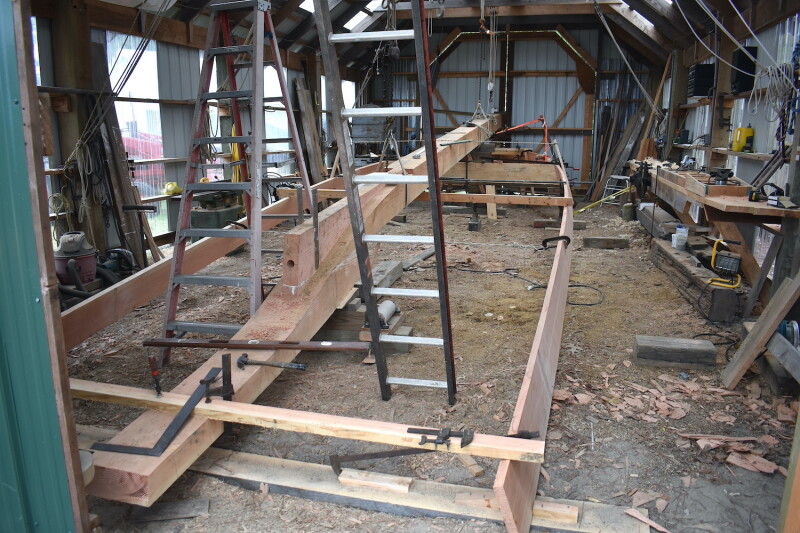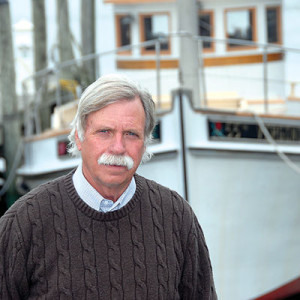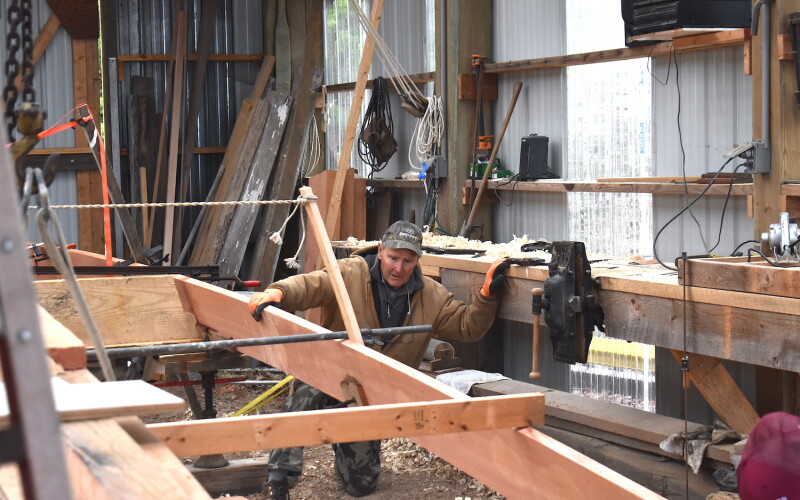Bill Keeling of Bohannon, Va. is building a 42’ x 12’ wooden Chesapeake Bay deadrise workboat in his boat shop on Mill Creek off East River in Mathews County, Va.
Since deadrise and cross-planked construction was introduced to the bay region in the 1880s, hundreds – probably thousands – of wooden deadrise boats were built in Mathews County, but now most all of the county’s boatbuilders have gone to heaven.
Museum boat shops around the bay continue to build wooden deadrise boats carrying on the cultural traditions of bay boatbuilding. But to find a boat underway in a boat shop outside of a museum context is a rarity.
Keeling is one of the last traditional wooden boatbuilders left in Virginia. He came from a long line of boatbuilders and railway men. His great uncle and grandfather ran a railway in Crittenden, Va. close to where Keeling grew-up in Eclipse, Va.
After graduating from the Apprentice School of Newport News Shipbuilding and Drydock in the 1960s, he gave up a career at the shipyard to go work the water and build boats.
He built his first large deadrise workboat for a commercial fisherman in 1976 and the last one in 1990 at his boat shop, then in Eclipse.
“I’m 77 years old and you have got to have a screw loose to build a boat this size today,” he says.
Keeling says he is building the boat for himself, but he knows with the rise of the bay’s oyster fishery that a waterman might come along with check or cash in hand.
It was recently announced by Virginia Marine Resources Commission that Virginia’s wild harvest this oyster season is the highest in 35 years. Commercial watermen are expected to have harvested over 300,000 bushels this season on public oyster rock.
Keeling says the price tag on his boat might slow down demand.
The late Willard Norris of Deltaville, Va., taught Keeling how to cut the staving wood and shape the deadrise in the bow using a bandsaw. “When I started, I shaped the V-deadrise cutting the staving with an adz,” he says. “Willard started building boats in 1950s and he told me that when he started he could build a 38-foot round-stern complete with a new engine for $850.”
Keeling pointed to the 12” x 12” fir keel on his boat. “You can’t buy that keel log now for $850 and on the low end a new engine cost $70,000,” he says.
The other thing that might slow demand is that Keeling is working regularly at Hudgins Horn Harbor Marina repairing wooden commercial fishing boats. “There are not any new wooden boats being built but watermen are pulling boats out of the marshes to work in the bay’s oyster fishery,” he says.
“I could spend all of my time just repairing boats,” he says. “The question is, who is going to be able to repair these boats when I’m gone? Most of that knowledge on how to repair wooden boats is already in the graveyard.”








